
The first consideration when choosing a filter media is the ammonia oxidizing capability of the media.
Filter Media Ammonia Oxidizing Capacity
Three tests (24 ninety day runs total) of the ammonia oxidizing capability of various filter media were run. All three tests correlated remarkably well. The tests gave an “efficiency” number for various aquarium filter media.
The first number, the “efficiency” is the average ammonia oxidizing that 15 cubic inches of media accomplished over a 90-day period. The second number is the “effective” surface area in square feet per cubic feet calculated from that test. The third number is the effective surface area in square feet per cubic feet calculated by simple mathematics. The correlation between the test results and the calculated surface area is very significant and means the testing was accurate.

The higher the number the better the media. So foam is the best static media and ceramic rings are the worst media for canisters by this test and by math calculations. Since foam must be exactly cut to the proper size to prevent flow around pot scrubbers and K1 are much easier to use successfully.
Note that for the metric system simply multiply any of the square feet per cubic feet numbers by 3.3 to get square meters per cubic meters. For the metric system 100,000 f2/f3 thus equals 330,000 m2/m3 or 330 m2/l3 .
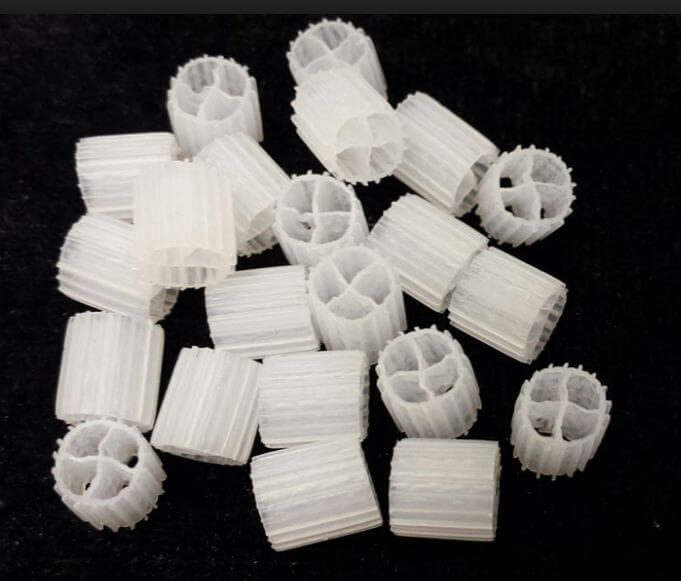
‘
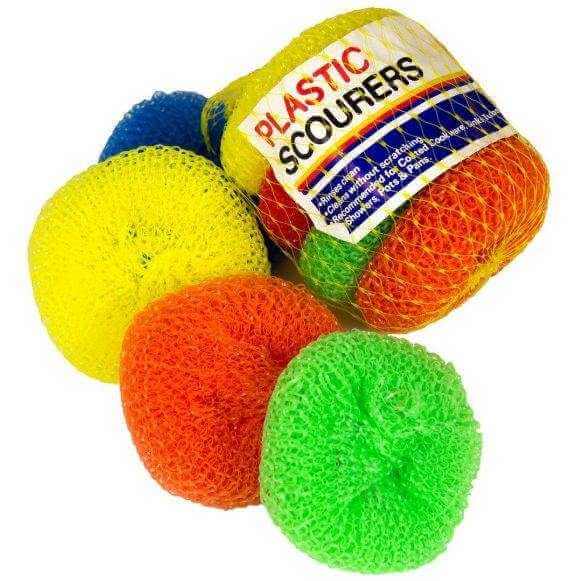
.
What this can translate to is illustrated by the number of fish a typical canister can handle stocked with some of these media:
- Foam
35 five-inch fish
- Static K1 media
20 five-inch fish
- Ceramic rings, Matrix
4 five-inch fish
These numbers reflect a canister which will give a hobbyist crystal clear, bacteria free water which in turn will give one very healthy fish. These are some huge differences.
Click on this link for the test:
7.1.3. Filter Media Test
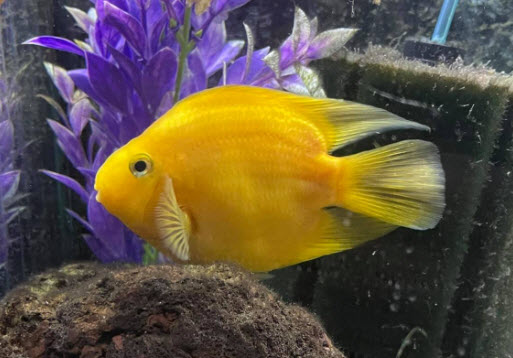
“f2/f3 from Math”
The “f2/f3 from Math” was based on the surface area of a sphere the same diameter either the diameter of the media (such as Matrix) or the diameter of a sphere which would sit inside the holes in said media (such as K1). The calculated surface area from the Math was not used to calculate anything. It was simply used as a “sanity” check on the testing data. The calculations are:

The final column was used above as the “f2/f3 from Math”. The reduction and/or enhancement of the figures in the final column reflect the realities of the situation. For instance, only about 40% of the foam cell is surface, 60% of the cell area is void, which allows great water flow but doesn’t give surface area. And some media, such as Matrix and Biohome, had a 50% “roughness” figure added to the number. Hollow media had another correction factor added (half inch rings were doubled).
These math calculations were tested and the tests generally followed the results of the VERY ROUGH math. The only significant inaccuracy was that pot scrubbers were much better than math calculations predicted.
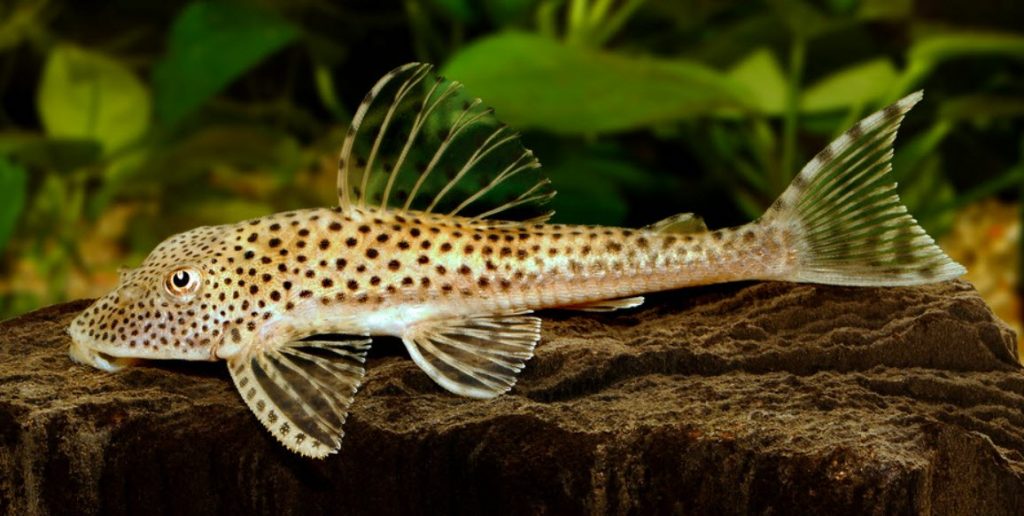
Calculating “Effective Surface Area”
Extrapolating from the testing and giving aquarium gravel the most dependable surface area calculation, gives the following “effective surface area” by media. This is the surface area which should be used for calculating the required volume of filter media for a given weight of fish.
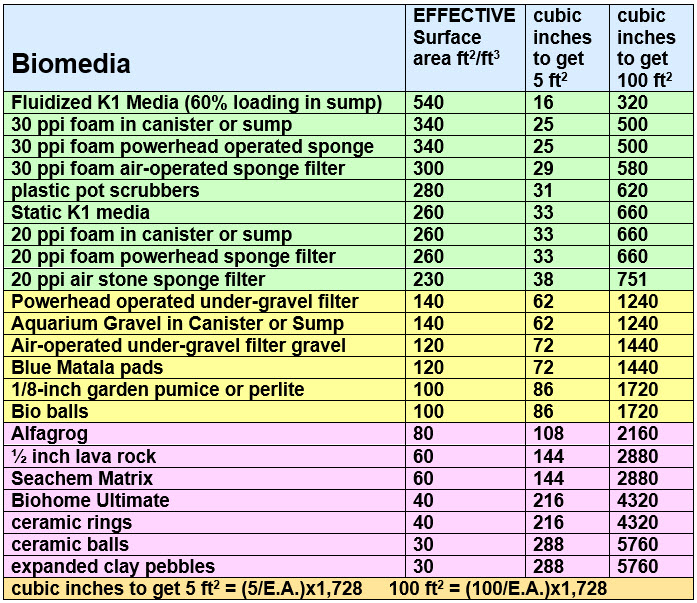
Note that for the metric system simply multiply any of the square feet per cubic feet numbers by 3.3 to get square meters per cubic meters. For the metric system 100,000 f2/f3 thus equals 330,000 m2/m3 or 330 m2/l3 .
Ammonia Oxidation versus Water Clarity
What is often missed in these calculations is that it is easy to oxidize ammonia. Oxidizing ammonia only requires on the order of five square foot of surface area for one pound of fish per testing and per the literature. But testing and the literature support the fact that crystal clear water requires somewhere around 100 square feet of surface area per pound of fish. And crystal clear water is healthy, disease free water.

Manufacturers’ Claims and Instructions
The claims of many ceramic, pumice and sandstone media manufacturers are based on something called the BET nitrogen infusion method. It measures the amount of nitrogen which permeates a media and adsorbs onto the surface of the media in a single molecule layer.
Since the nitrogen molecule is a couple of billion times smaller than a beneficial bacteria cell this is obviously a very misleading statistic. If a beneficial bacterial cell can’t even get to a surface, let alone form a film on it, the surface is useless. The tiny pores in many media are thus simply of no use.
Another concept which is pushed by manufacturers of some filters is that media needs to be replaced on a regular basis. Some HOB manufacturers say their cartridges need to be replaced every month. There are canister filter manufacturers that say the ceramic bio-rings and the foam in their filters need to be replaced every six months.
This is just ridiculous. Pure and simple profit motivated Hogwash!!!! Cartridges are easily cleaned when they plug and can be reused for years. Foam will last five to ten years while ceramic or plastic media will last for twenty years or more.

.
Belief Perseverance Effect
Experience on social media has shown that the table above and the testing which produced it will not be believed by 90% of the hobbyists that read it. They will fiercely defend their favorite media (Matrix is probably the single most popular filter media and easily 90% of all biomedia used is either expensive Matrix, Biohome or a ceramic media) and no one will be able to change their minds.
If anything, heavy, slick marketing and the “power of popularity” will make them more intransigent. If presented with test data and logical, common-sense proofs of the data, they will rationalize the experiments away and then rationalize some more. This is called “belief perseverance effect,” something we all fall prey to, and there is no point in fighting it.
.
“Nothing dies harder than a lie that people want to believe” Calvin
.
The numbers are accurate, and that fact is proven in the links below.
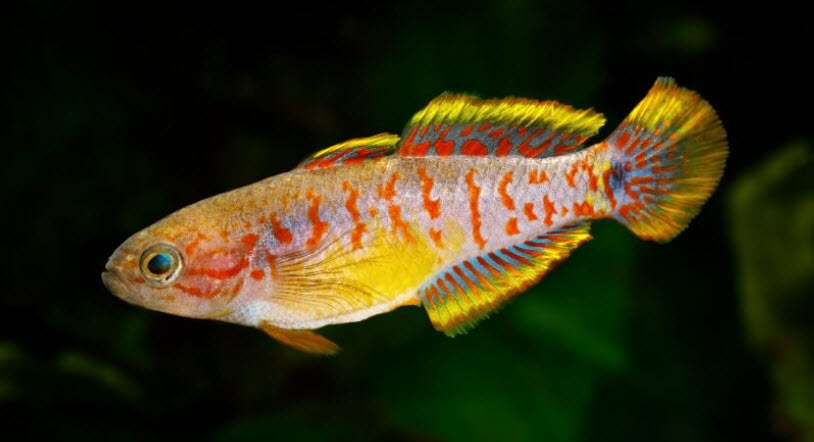
For more information about filter media click on these links:
7.1.1. Filter Media Costing
7.1.2. Function of Filter Media
7.1.3. Filter Media Testing
7.1.3.1. Filter Media Ammonia Oxidation Test
7.1.3.2. Filter Media Water Clarity Test
.
Return to Filter Media Menu
.
Aquarium Science Website
The chapters shown below or on the right side in maroon lead to close to 400 articles on all aspects of keeping a freshwater aquarium. These articles have NO links to profit making sites and are thus unbiased in their recommendations, unlike all the for-profit sites you will find with Google. Bookmark and browse!
.

Mountry says
Dave that makes sense. It’s always hard to know how much to feed when the numbers of fish are constantly changing. Live-bearers are fun.
Dave says
Mountry …. I just use pot scrubbers like they come. Sounds like you need a lot more filtration (and probably a lot less feeding). Any filtration scheme can be overladed and you certainly seem to be doing just that.
Mountry says
I have enjoyed reading so many of your articles and I’m sure there’s still plenty I haven’t read yet as there is a ton of amazing information on here.
I started experimenting with pot scrubbies December 1st 2023 my initial test I just washed them and packed them loosely in the filter and I found that they clogged extremely rapidly. My second experiment I stretch the pot scrubbies as much as I could without unrolling them to a kind of loosen them up a bit and I was still not real happy with how quickly they clogged so my latest test which is not complete yet I actually unrolled them and stuffed them loosely in the filters. My hope is to not have to clean the filters regularly as I do not want to disturb the bacteria.
You unroll them or use them in there normal form?
Dave says
Brad UK … The calculated surface area was calculated by taking the surface area of round balls with the same diameter as the media in the case of a solid media like Matrix (I think Matrix as half an inch diameter plus 50% for a rough surface) and the media with holes was calculated as though each hole was a round bead. But note the calculated surface area was NOT used for any of the calculations. The calculations were all based off the testing, using aquarium gravel as the baseline, not theoretical calculated surface area. The tested surface area and the theoretical surface area correlated very roughly for all save the pot scrubbers.
Brad - UK says
Hi Dave,
Scratching my head on this one!
How do you actually work out the surface area of plastic/ceramic media?
For Foam, you can kind of measure it and do the math. But how do you assess the surface area (in conjunction with using your tables) for 25Lbs of K1, or 15Lbs of Matrix, or 10Lbs of HEL-X 13? Which has small parts with surfaces on it.
In short, trying to understand the formulae take a bag of ceramic/plastic media and work out how that equates to surface area. Its very hard to measure that in comparison to foam!
Thanks as always, and have a great Christmas
Brad
Dave says
In reply to Dioni …. No idea why he can’t access the site. I don’t even think its possible to block a person from a website.
Dioni says
hello, chat gpt does not have access to this website, I gave him the link of a topic to discuss it and he told me that, do you know why it could be?
Eddi Trangeled says
Thank you for the very good articles.
I have come to realize that all these ceramic medias are nothing more than good hydroponic media. That hurt. I have used a lot of money on them through the years.
Today i prefer different versions of Hamburger matten filters. They give very clear water.
Kind regards Eddi Trangeled from Denmark
Herbert Gerd Hildebrandt says
The greatest filter media article out there. Thank you so much!
Greetings
Gerd vom Germany